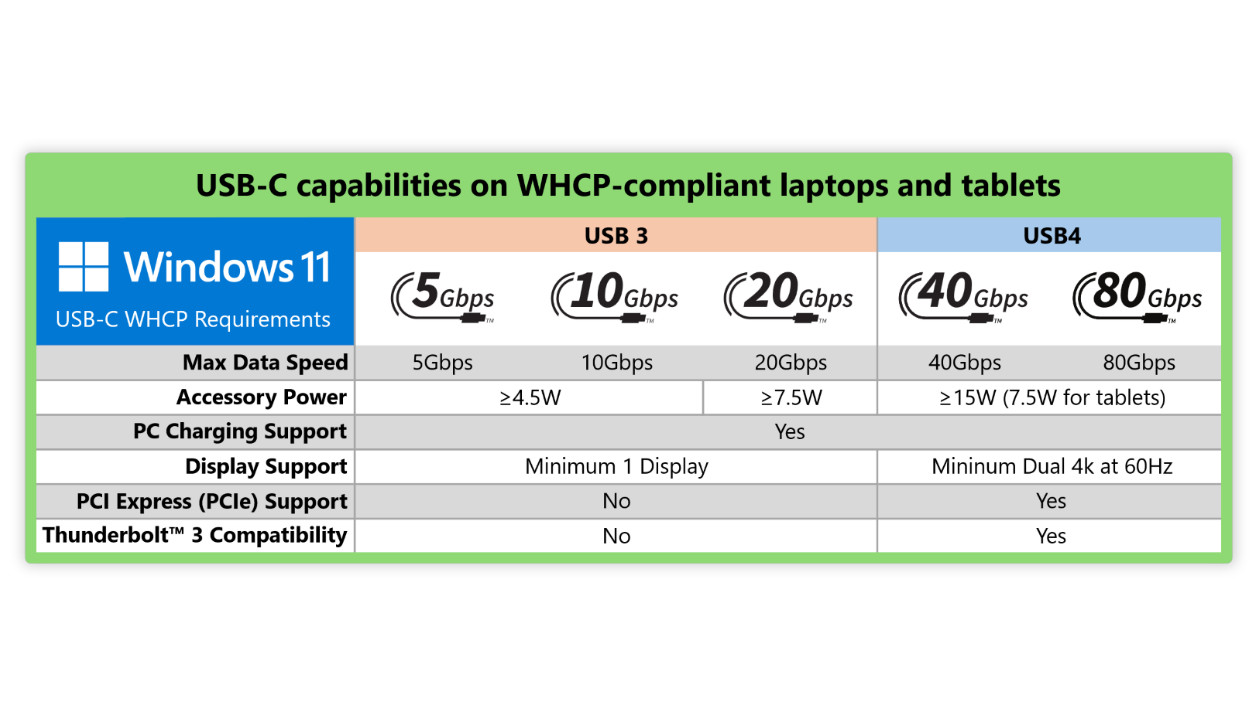- Microsoft has new rules to ensure more consistency with USB-C ports
- This means every USB-C port will offer data, power, and display support
- Previously, you weren’t guaranteed to get all of those basic elements if laptop makers cut corners with their connectors
Going forward, the USB-C ports on Windows 11 laptops will be held to more consistent standards that mean users can expect a minimum amount of functionality with any given connector.
Tom’s Hardware noticed Microsoft’s blog post explaining a fresh update to the Windows Hardware Compatibility Program (WHCP) that’s designed to end confusion around USB-C ports. The broad idea is to ensure every single one of these connectors deliver certain key features in terms of data transfer, power delivery (charging), and running an external monitor.
Currently, while the USB-C specification encompasses all those separate elements – and a lot of versatility for the port therein – parts can be missing with connectors on some laptops, as it’s not mandatory to include everything.
Microsoft has changed this with its new way of working, observing that: “While the USB specifications give PC manufacturers the ability to choose which optional features the port supports, we set out to establish a minimum bar for USB-C port capabilities on PCs.”
That baseline bar means that with Windows 11 laptops (and tablets), all USB-C ports must provide display support (to connect a monitor), PC charging support (power), and of course data transfer (which all USB connectors do, of course) at a certain speed.
Furthermore, Microsoft notes that any port which supports USB 40Gbps will work fine with both USB4 and Thunderbolt 3 peripherals.
These updated WHCP requirements have come into play with Windows 11 24H2, and notebooks running 24H2 will already support them.
Analysis: Consistency with connectors

With the old way of working, the practicality of USB-C ports is that you might buy a laptop which comes with a few of these connectors, and be quite happy chugging along using them for USB sticks or charging. Then, one day, when you plug in a monitor, you’ll suddenly find out that your ports don’t support a display, because the laptop maker produced these USB-C connectors without that particular capability (to save a bit of money).
The problem is there’s no clear labelling on a USB-C port, and you may not find out about any missing pieces of the functionality puzzle until you come across them in this way – and it’s too late at that point.
With the new minimum standard in place, all USB-C ports on WHCP-certified Windows 11 laptops will definitely support all those three basic pillars: power, display, and data transfer.
Now, note that there are still variations in the specs of USB-C ports, in terms of how many displays they may support, or how much power the USB cable will deliver, and the speed of data transfers (all of which should be made clear in the notebook’s spec).
See the screenshot above for the details, but the central point is that from now on, you know that all three of the fundamental bases are covered with at least some level of functionality when you’re buying a new Windows 11 laptop – with every single USB-C port on-board the device – which has to be a good thing.
You might also like...
- macOS Tahoe rumored to follow Sequoia – here’s 3 things to expect from Apple’s next desktop OS
- Can’t upgrade to Windows 11? This Linux project wants to save your old PC from the scrapheap when Windows 10 support ends
- Been hiding from Windows 11 24H2 due to the fuss about all the bugs? There’s nowhere to run now as Microsoft’s made the update compulsory








 English (US) ·
English (US) ·